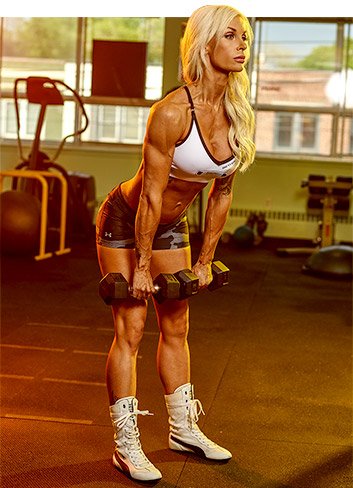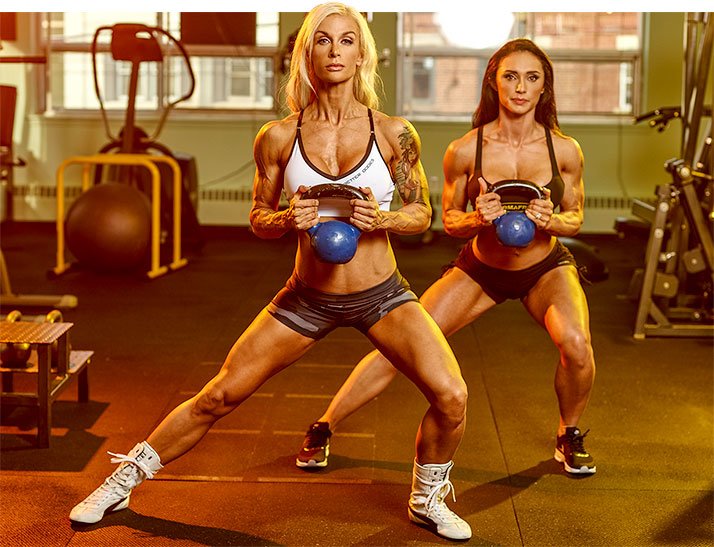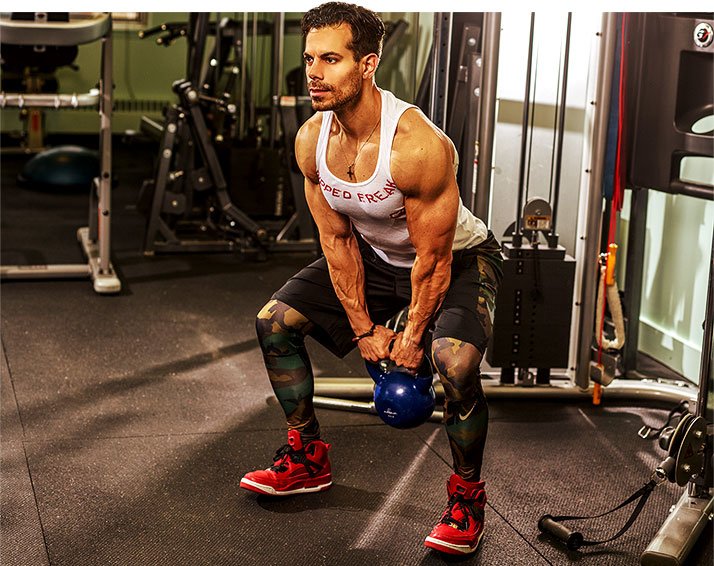
6 Must-Do Unique Leg Exercises
Build a truly effective leg workout that will help you gain size and strength on the double with these 6 must-do movements!
Seems like everyone these days is bragging online about their especially brutal leg-day routine. But follow them around the gym, and it's more likely that what they're doing is just brutally boring. A few squats, some stiff-legged deads, chase the burn on the machines, and they're out the door.
If you want freaky legs to match your freaky arms, back, chest, and shoulders, the old way of doing things isn't going to cut it. Your leg day should be custom-built to eradicate the most universal sources of lower-body weakness. It should be difficult, but also diverse enough to rid you of the type of muscular imbalances that usually hold back strength and muscle gains.
Here are my favorite ways to boost time under tension, push intensity through the roof, and keep growing while others stand still.
Top Leg Exercises
Watch the video - 4:55
1
One-and-a-half-rep box squat
Transform your basic squats into super squats that will have your legs burning deep—and then growing big! This simple technique will increase your muscles' time under tension and emphasize the crucial bottom range of the squat. By stressing full range of motion and maximizing the involvement of your glutes and hamstrings, it will also make you better at all types of squats.
Technique
- Set a box (or step or bench) a few feet behind your squat rack, and get into position by loading the barbell onto your traps. The height of the box should be at or slightly below knee level.
- Position yourself over the box with your feet about shoulder-width apart.
- Lower yourself all way down to the box, and pause.
- Drive up to the halfway point, and pause.
- Slowly return back down to the box in a controlled fashion.
- Sit on the box, then finish the rep by exploding back up to the starting position.
Tip: Keep your core tight throughout each phase of the 1-1/2 rep to maintain your positioning and control during the set.
 2
2
Stiff-legged deadlift 21
In my article, "10 Unique Must-Do Arm Exercises," I explained why I'm such a big fan of the 21 method for biceps growth. It turns out that that this classic intensity booster is also great for the biceps femoris and the other two big muscles that make up your hamstrings—not to mention the glutes and lower back!
Technique
- Start tall with your feet shoulder-width apart, and hold a loaded barbell, dumbbells, or kettlebells. Keep a tiny bend in your knees so they're not locked out.
- Slowly lower to the bottom position until you feel a slight stretch in your hamstrings. Pause, then complete 7 reps halfway up.
- Perform another 7 reps from the top position to the midpoint.
- Perform your last 7 reps from top to bottom using a full range of motion.
Tip: Keep your shoulders pulled back and knees slightly bent, and focus on pulling through your heels to emphasize the hamstring contraction.
3Lateral lunge
You live in three dimensions. So why only train your legs in two dimensions, with both feet firmly on the ground? Sure, there's a time for planting your foundation and loading up as heavy as you can, but you might be surprised by what you can accomplish through the simple addition of training laterally, or side-to-side.
The lateral lunge forces you into a different plane of movement, hitting the abductors, adductors, glutes, and calves while boosting mobility in the hips and lower back. It offers performance benefits for those looking to improve their athletic ability, but also gives your muscles a serious shock, even with a light weight.

Technique
- Start tall with your feet together, and hold a kettlebell in a goblet-style position in front of your body.
- Slowly step out laterally to your left and bend your left knee while keeping your right leg straight. Keep your left heel on the ground and your knee lined up over your foot.
- Pause at the bottom before exploding back to the starting position. Complete the set before repeating on your right side.
Tip: Keep your head and chest up by pulling the kettlebell back in front of your chest. Make sure to push off the floor while performing each rep, rather than dragging your foot.
4Jump squat
Who says you have to grind through heavy nose-bleeding squats in order for them to be effective? To add intensity to the king of all exercises, just lighten the weight and explode into the air. Performing jump squats can boost power production, as well as the anabolic hormone response for muscle growth.
Technique
- Start in a basic back-squat position with a barbell loaded onto your traps. Start with a weight that is no more than 30 percent of your one-rep max, and build up from there.
- Slowly lower until you hit a full range of motion, or your thighs are parallel to the ground.
- Explode up and off the ground while maintaining a tall athletic position.
- Absorb the weight with your quads, hamstrings, glutes, and calves as you hit the floor, controlling the negative. Sink back down immediately into another squat, and repeat.
Tip: Drive from the bottom up and keep your chest up and proud throughout the movement.
5
Single-leg bench squats
Single-leg squats, or pistol squats, are a fantastic way to add balance and symmetry to your lower body while boosting overall athletic performance. But many people avoid them, thinking they need to be able to do unsupported rock-bottom pistols in order to see the benefit. This definitely isn't true!
My favorite lower-body movement is the box squat, but not just the standard two-footed, barbell-loaded variety. Single-leg squats to a box or bench are a crucial part of my program. They allow you to focus squarely on one leg at a time, addressing the imbalances that may be affecting your performance—and ultimately, your gains. Plus, they're easy to customize, since you can adjust both the height of your box and the weight (if any) you use.
Technique
- Place a bench or box 1-2 feet behind you, and sit down by performing a squat to determine the correct placement and positioning. Go at least to parallel, and maybe slightly deeper.
- Start off standing with your right leg pistoled out in front of your body, to work your left leg.
- Slowly lower yourself to the bench, pause, and then drive off the left leg back to starting position. Repeat on the other side.
Tip: Keep your head and chest up, and maintain a tight core and flat back throughout the movement. Once you can comfortably complete 12 reps per side, add weight to make this move more challenging.
6Kettlebell swing
What's the perfect way to end your leg day? With both hands on a kettlebell and your heart in your throat, of course! Finish off your legs and core with this explosive movement that takes aim at your glutes and hamstrings, jacks up your heart rate, and takes your workouts to a whole new level.

Technique
- Start tall, with your feet slightly wider than shoulder width. Hold a kettlebell between your legs with your chest up and shoulders back.
- Initiate the swing by bending your hips and knees while bringing the kettlebell back and down. Keep your back neutral, like you're performing a Romanian deadlift.
- Use your hips to drive the kettlebell forward and up explosively. Clench your butt and abs, and don't let your back extend backward too much.
- Actively pull the kettlebell back down to begin another rep.
Tip: Keep you head and chest up, and control the kettlebell so you don't lose your stance and positioning. Maintain a flat back throughout the movement, and focus on driving with your legs and core.

